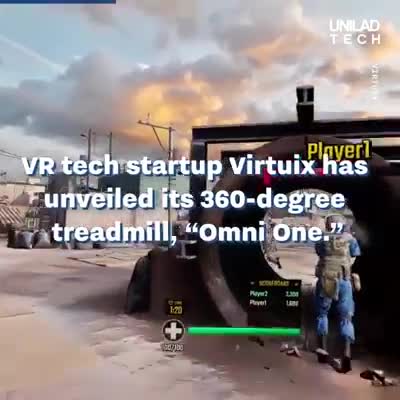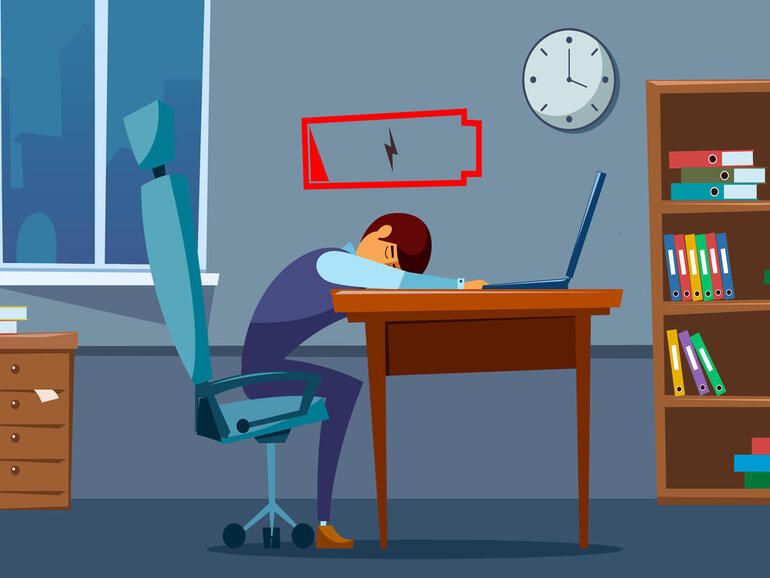This ‘full-body controller’ lets you physically run, jump, and crouch in place 😲😍



Today, the Department of Defense announced $600 million in awards for 5G experimentation and testing at five U.S. military test sites, representing the largest full-scale 5G tests for dual-use applications in the world. Each installation will partner military Services, industry leaders, and academic experts to advance the Department’s 5G capabilities. Projects will include piloting 5G-enabled augmented/virtual reality for mission planning and training, testing 5G-enabled Smart Warehouses, and evaluating 5G technologies to enhance distributed command and control.
“The Department of Defense is at the forefront of cutting edge 5G testing and experimentation, which will strengthen our Nation’s warfighting capabilities as well as U.S. economic competitiveness in this critical field. Through these test sites, the Department is leveraging its unique authorities to pursue bold innovation at a scale and scope unmatched anywhere else in the world. Importantly, today’s announcement demonstrates the Department’s commitment to exploring the vast potential applications and dual-use opportunities that can be built upon next-generation networks,” said Michael Kratsios, Acting Under Secretary of Defense for Research and Engineering.
The test sites include: Hill Air Force Base, Utah; Joint Base Lewis-McChord, Washington; Marine Corps Logistics Base Albany, Georgia; Naval Base San Diego, California; and Nellis Air Force Base, Las Vegas, Nevada.

The ‘Universal law of touch’ theory was created by researchers at the University of Birmingham, who used mathematical modelling of touch receptors in humans and other animal species. By applying the mathematics of earthquakes to model how vibrations travel through the skin, the team discovered that vibration receptors beneath the skin respond to Rayleigh waves in the same way regardless of age, gender, or even species.
Breakthrough appears to support Elon Musk’s claim we are living in a simulation.

Virtual reality software which allows researchers to ‘walk’ inside and analyse individual cells could be used to understand fundamental problems in biology and develop new treatments for disease.
The software, called vLUME, was created by scientists at the University of Cambridge and 3D image analysis software company Lume VR Ltd. It allows super-resolution microscopy data to be visualised and analysed in virtual reality, and can be used to study everything from individual proteins to entire cells. Details are published in the journal Nature Methods.
Super-resolution microscopy, which was awarded the Nobel Prize for Chemistry in 2014, makes it possible to obtain images at the nanoscale by using clever tricks of physics to get around the limits imposed by light diffraction. This has allowed researchers to observe molecular processes as they happen. However, a problem has been the lack of ways to visualise and analyse this data in three dimensions.
The OEC need some VR sets next year.
Star Trek’s holodeck, that lets people physically interact with a virtual world could be a step closer thanks to a ‘universal law of touch’, discovered by British scientists.
Researchers from the University of Birmingham focused on so-called Rayleigh waves — energy that passes over the surface of objects when they are struck.
They found that, when it comes to touch, these waves also travel through layers of skin and bone and are picked up by the body’s touch receptor cells.

Seismic waves, commonly associated with earthquakes, have been used by scientists to develop a universal scaling law for the sense of touch. A team, led by researchers at the University of Birmingham, used Rayleigh waves to create the first scaling law for touch sensitivity. The results are published in Science Advances.
The researchers are part of a European consortium (H-Reality) that are already using the theory to develop new Virtual Reality technologies that incorporate the sense of touch.
Rayleigh waves are created by impact between objects and are commonly thought to travel only along surfaces. The team discovered that, when it comes to touch, the waves also travel through layers of skin and bone and are picked up by the body’s touch receptor cells.
VR Boots for gaming.
Last year I did a VR experience meant to simulate what it’s like to be at the US-Mexico border wall. The tall, foreboding wall towered above me, and as I turned from side to side there were fields of grass with some wildlife and a deceivingly harmless-looking border patrol station. I wanted to explore more, so I took a few steps toward the wall, hoping to catch a glimpse of the Mexico side through its tall metal slats.
“Oops!” a voice called out. A hand landed lightly on my arm. “Look out, you’re about to run into the wall.” The “wall” was in fact a curtain—the experience took place in a six-foot-by-eight-foot booth alongside dozens of similar VR booths—and I had, in fact, just about walked through it.
Virtual reality is slowly getting better, but there are all kinds of improvements that could make it feel more lifelike. More detailed graphics and higher screen resolution can make the visual aspect (which is, of course, most important) more captivating, and haptic gloves or full haptic suits can lend a sense of touch to the experience.
On Sept. 29, we are launching science, tech demos, & products to the International Space Station!
🌱 Growing radishes in space
🚽 Space toilet
🌊 Water recovery
🎥 A Felix & Paul Studios Virtual Reality camera
💫 An Estee Lauder serum.

Family Mart’s robots will still be controlled by human employees.
Hardly a day goes by that we don’t find ourselves stopping into one of Japan’s many convenience stores to grab a bite to eat or something to drink. But while we’ve come to expect tasty onigiri rice balls and tempting dessert beverages when we walk through the door, soon we might be seeing robots.

Before #COVID19, we like to imagine a #future where we can get and do anything from home, including working, with the help of novel #technologies such as #VR and #AR.
However, the #COVID19 pandemic shows us the human nature, that is, “going out” is one of the basic needs for human being!
One revelation here is that: When speaking of how #technology can change our lives, we often neglect the humane factors and focus only on the technical ones. Take #VR as an example. Yes, it does allow you to have a shopping experience similar to (or even better than) shop outside. However, do you really want to stay at home 24/7 and complete everything online?
https://tek.io/2RP6LGn
by Esther Shein from TechRepublic
#WorkFromHome #FutureOfWork #RemoteWorking
Mental health was the No.1 factor influencing future working environments, the ongoing IBM Institute for Business Value survey found.